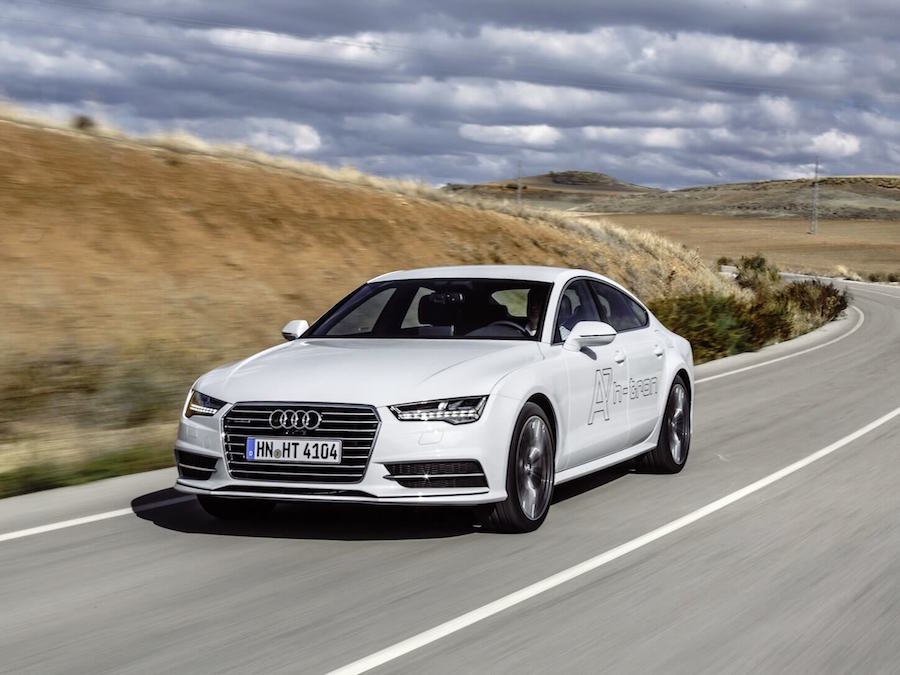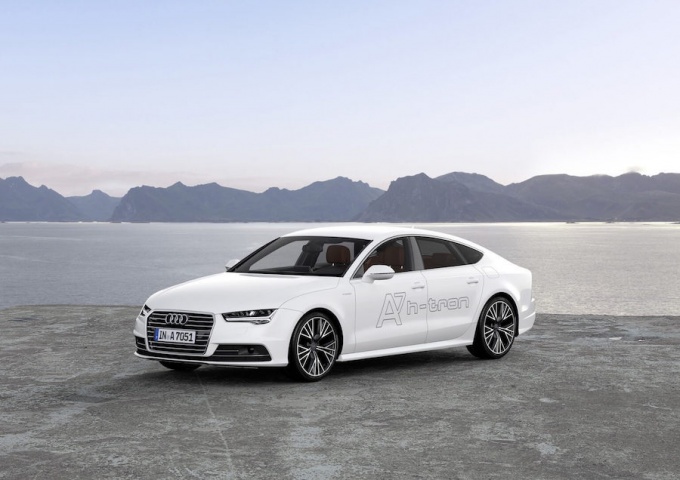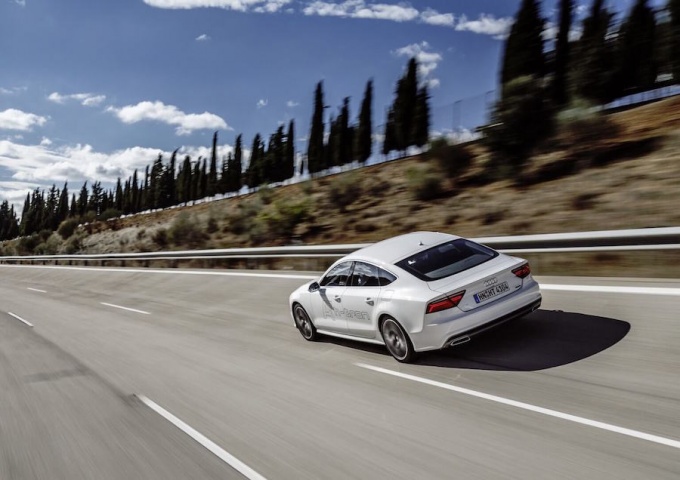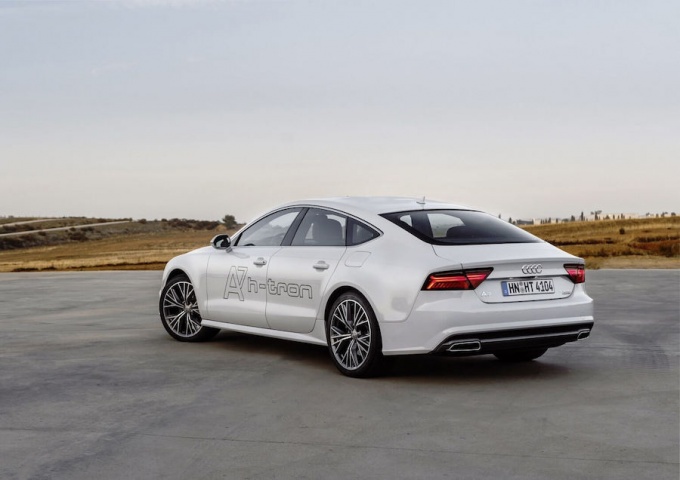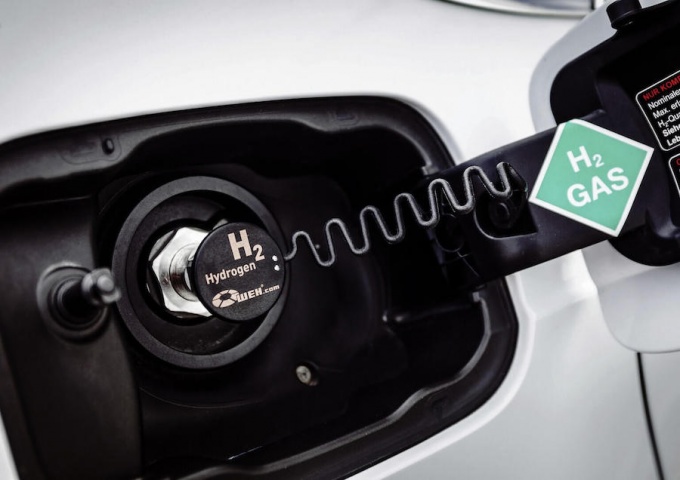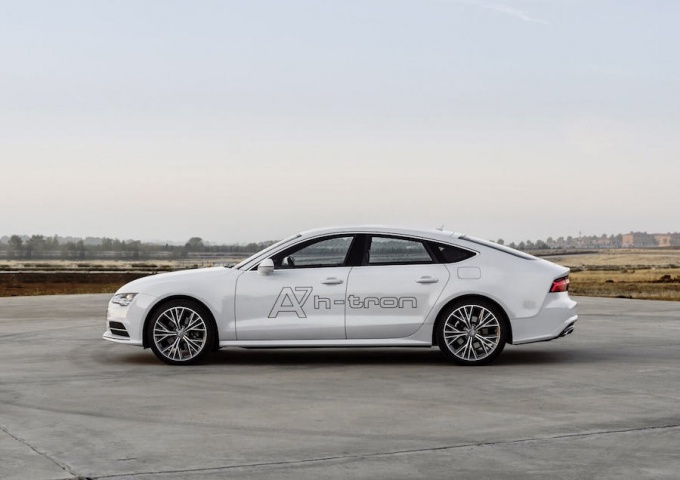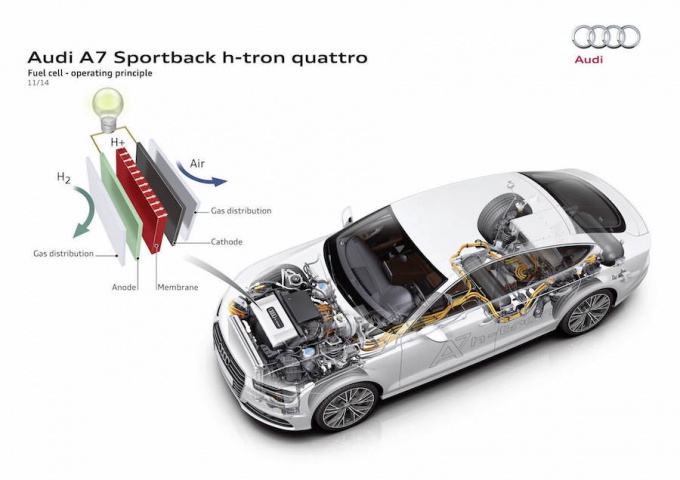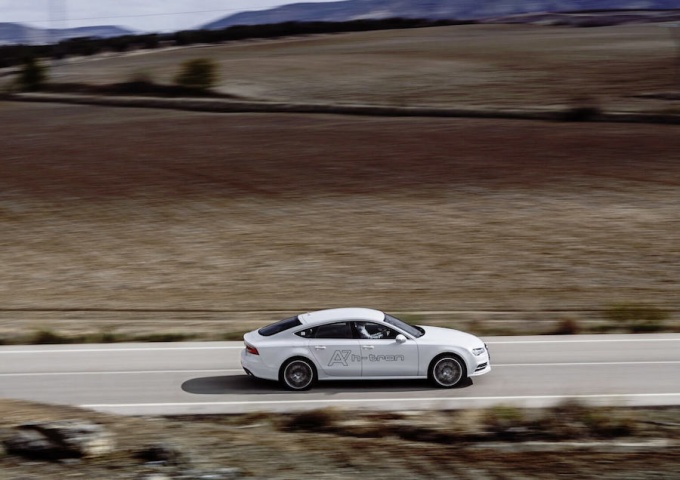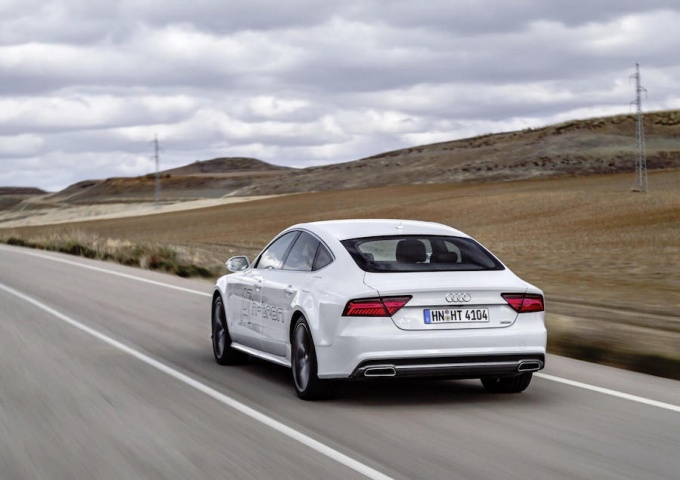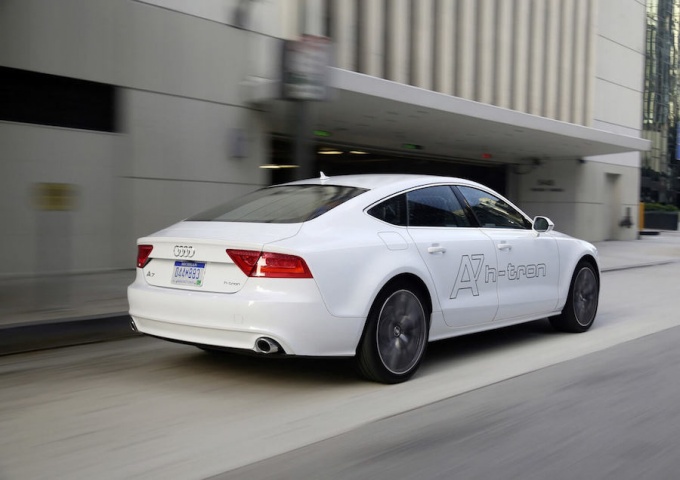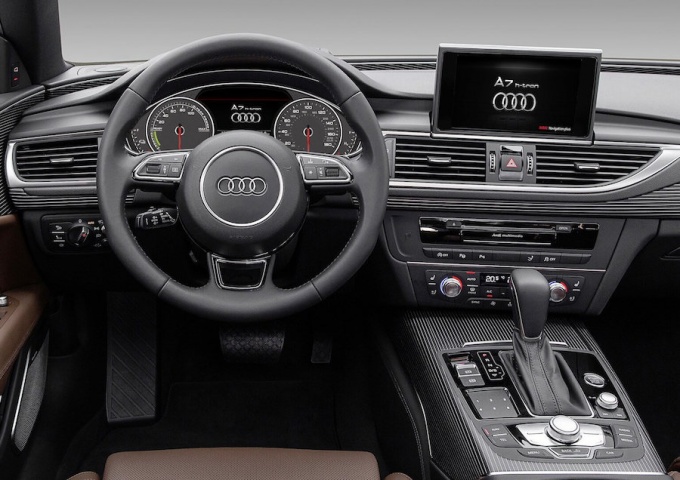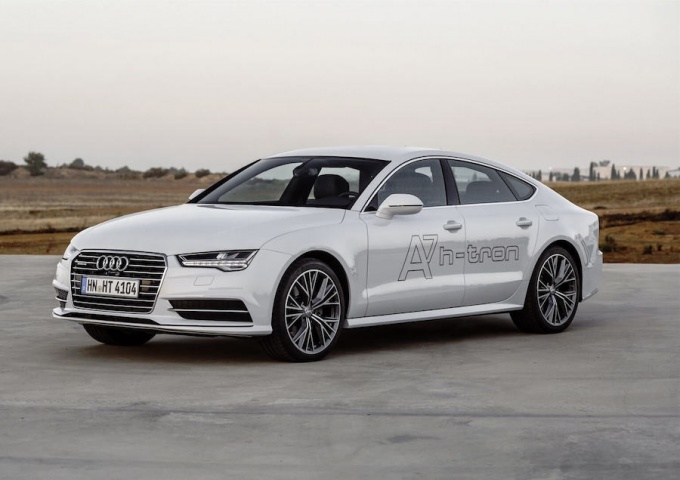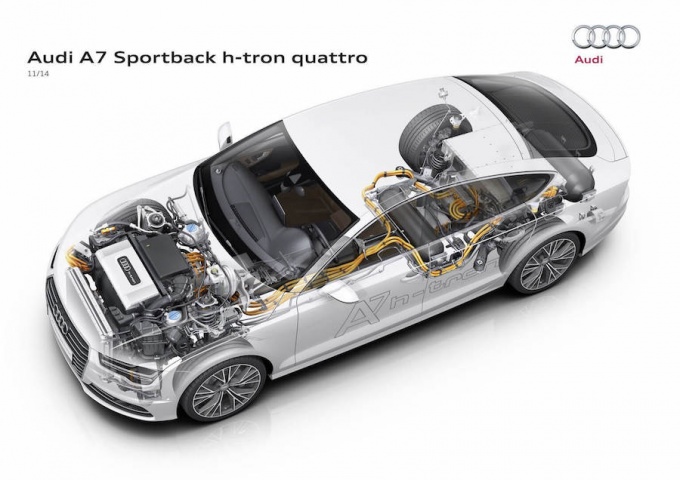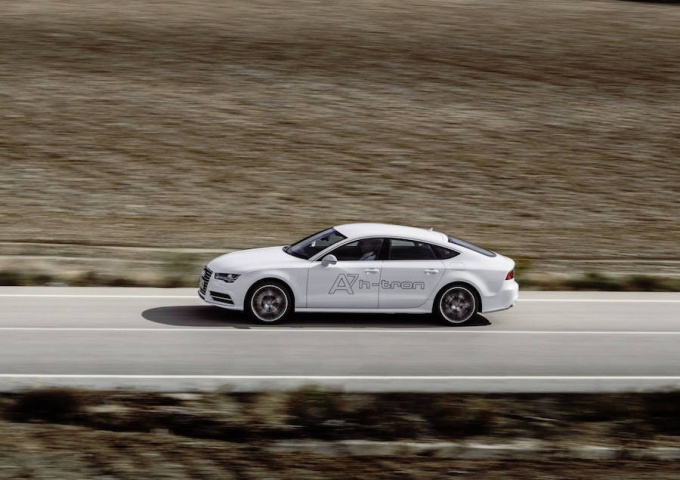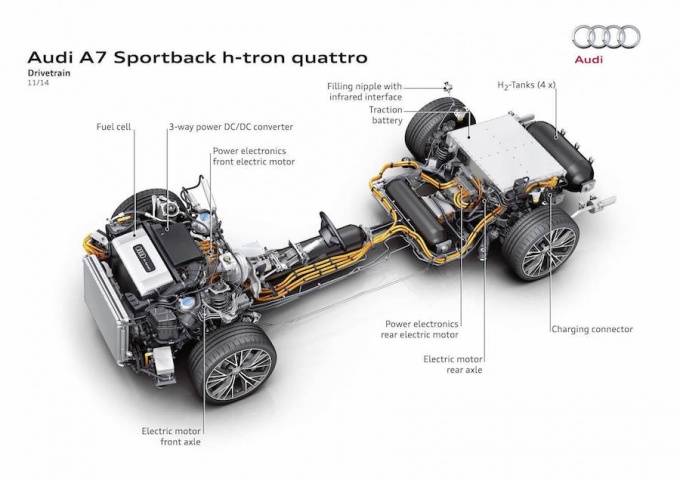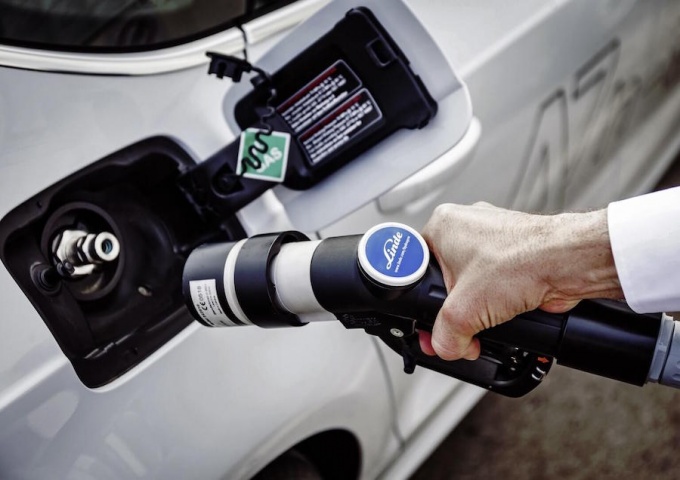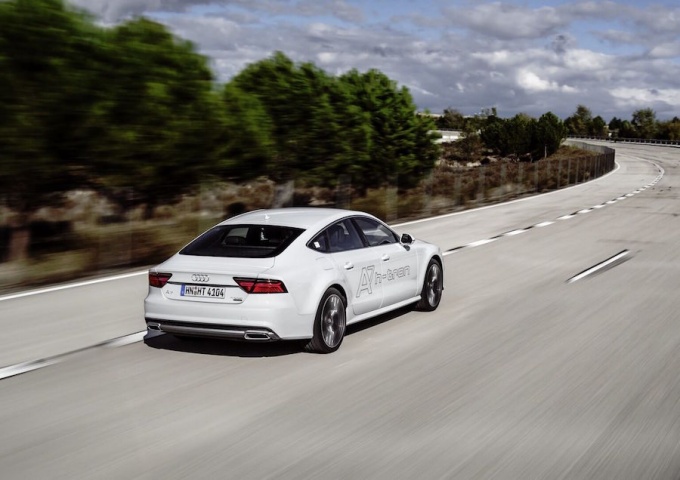Hydrogen fuel-cell power may not be just around the corner, but it has potential, as a drive in Audi's latest technology demonstrator reveals.
The star of the Audi stand at this year's Detroit Auto Show in January was the h-tron quattro concept, a sporty looking SUV that many believe will morph into a production car called the Q6. Under the aggressive styling lines, however, is a potentially bigger story. The 'h' stands for hydrogen, as this concept is powered by a fuel cell stack fed by the stuff. Most will dismiss that aspect of the concept as airy-fairy motor show dressing, but Audi is paying a lot more than lip service to developing hydrogen fuel cell technology.
In fact, it has developed hydrogen fuel cells to a level where it's happy to let mere motoring journalists loose on the public road in a car powered by one. And I don't mean a nervously monitored 30km/h on a quiet back road either. The vehicle in question is the Audi A7 Sportback h-tron quattro and other than the decals and a few additional bits and pieces in the cabin, this prototype looks remarkably similar to any other Audi A7. Press the 'engine' start button though and things are a little different. There's no sound from the engine bay itself and the only noise is a faint whirring, which turns out to be the hydrogen compressor.
That supplies hydrogen to the fuel cell stack mounted under the bonnet, which is made up of 300 individual cells with a polymer membrane and a platinum catalyst either side of that. The hydrogen is supplied to the anode on one side and it breaks down into protons and electrons. The protons pass through the membrane to the cathode, where they react with oxygen in the air, creating water vapour (the system's only emission). The electrons, in the mean time, supply the electrical power.
But there's a lot more to this Audi A7. It maintains quattro four-wheel drive, but there is no physical connection between the front and rear axles, which are driven by individual electric motors, with 85kW (115hp) continuous output or up to 114kW (155hp) for short 'overboost' periods. Each motor also produces a hefty 270Nm of torque. Hence the prototype can accelerate from zero to 100km/h in 7.9 seconds and tops out at 180km/h. It certainly feels pleasingly rapid on the move, quickly getting up to speed and accelerating in a linear fashion. We didn't have the space to test the top speed, but easily achieved over 100km/h. It felt entirely normal.
There's more cleverness in the prototype, notably its adoption of the plugin hybrid concept. It has an 8.8kWh lithium-ion battery under the boot that can be charged by plugging the car into the mains, though it also stores energy recovered under braking and gives the car a boost of acceleration when required. On top of that, this A7 can travel some 50 kilometres on battery power alone, though that range is eclipsed by the total possible when the car's hydrogen tanks are full (a process that takes just three minutes). With 5kg of hydrogen on board, pressurised to 700 bar, Audi claims the A7 h-tron can travel over 500 kilometres before it needs a fill-up.
Fuel cells themselves are not new technology, and the idea seems so simple, but there are still many challenges in getting them to production. Cost, weight and temperature control are challenges rather than barriers, but speaking with Audi's engineers and management, it's clear that the biggest obstacle to mass market hydrogen power is infrastructure. There's a sprinkling of specialised hydrogen 'stations' around the world at present, but no clear path to rolling them out in substantial numbers. Audi and other car makers continue to develop the technology for production, but all agree that it'll take legislative intervention to bring hydrogen power to the next level. That won't stop them bringing it along to motor shows of course.

